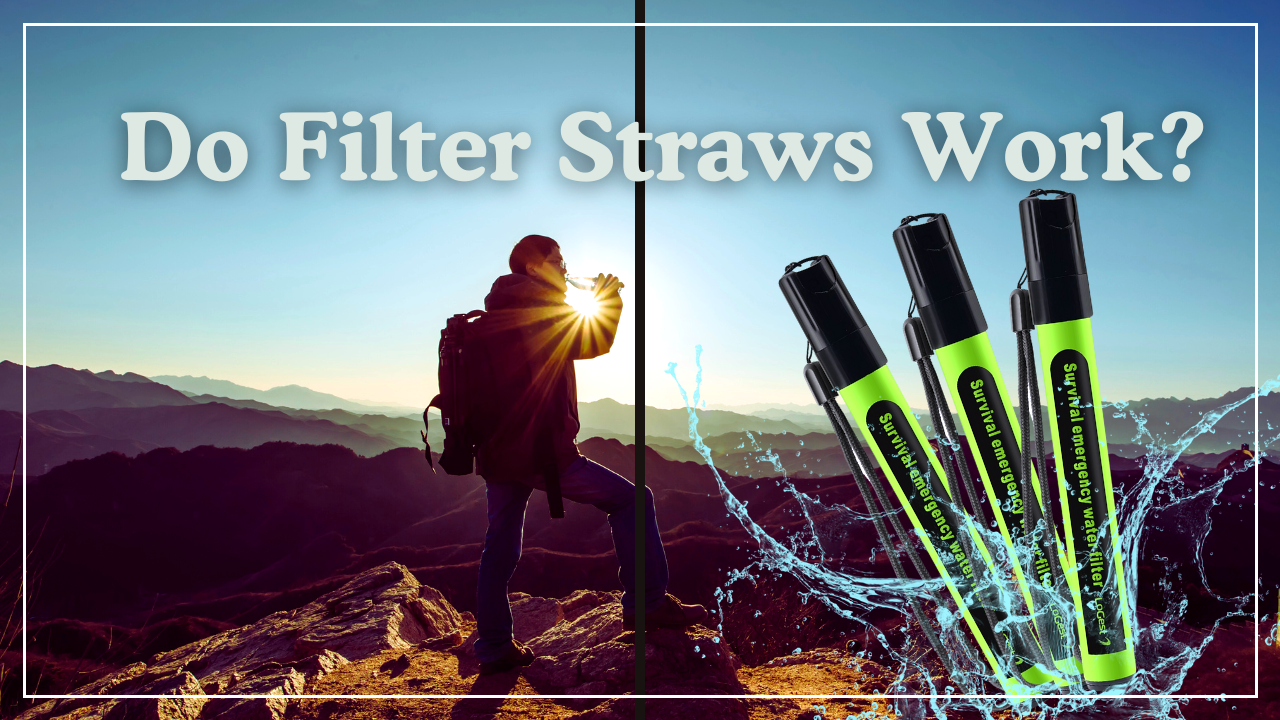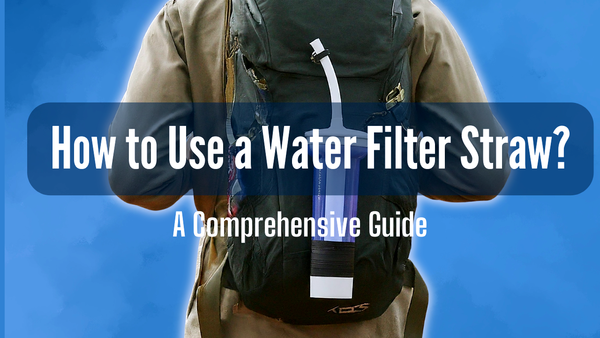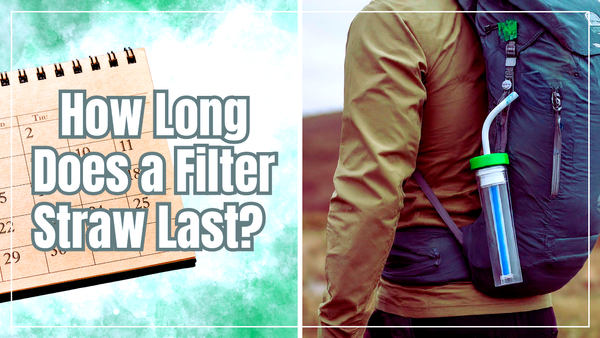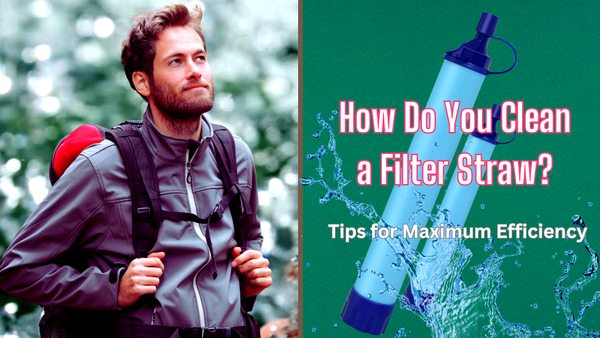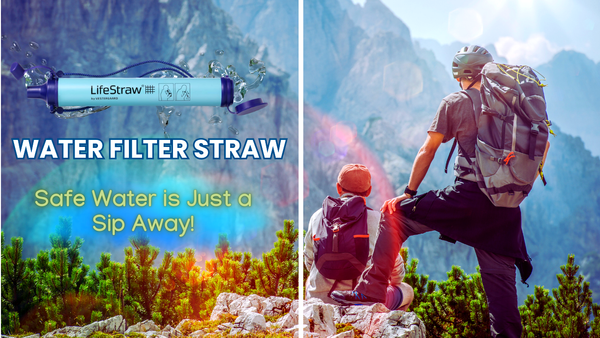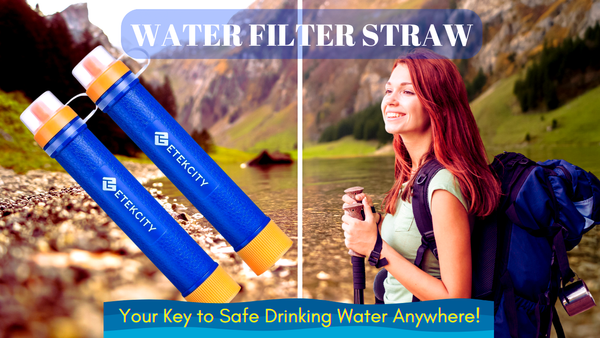Key Takeaways:
- Filter straws effectively remove waterborne bacteria and other contaminants, making them a reliable option for clean drinking water.
- They are incredibly simple to use and can be a vital tool in emergency preparedness kits and for outdoor enthusiasts.
- Different filter straws, such as the LifeStraw, offer varying levels of filtration, including removing heavy metals and microscopic minerals.
Water is the most important thing for survival, yet access to clean drinking water can be a challenge, especially in remote areas or during emergencies. Filter straws have emerged as a popular solution, promising to turn dirty water into safe drinking water with little effort. But do filter straws work as effectively as advertised? This article delves into the mechanics, effectiveness, and practical applications of filter straws, providing a comprehensive guide for anyone considering this portable water filtration option.
How Filter Straws Work

Straw filters (like the LifeStraw) use a combination of filtration technologies to remove contaminants from water. The main mechanism is a hollow fiber membrane, which acts as a physical barrier to bacteria, protozoa, and other pathogens. When you drink through the straw, the water is forced through these tiny fibers, trapping contaminants and allowing clean water to pass through.
Some filter straws also have activated carbon to remove chemicals and heavy metals and improve the taste of the water. This dual-layer filtration system means the water you drink is not only safe but also tastes good. The simplicity of this design makes filter straws super easy to use; no pumping or waiting time is required.
Effectiveness of Filter Straws

The effectiveness of water filters, including filter straws, depends on the quality of the filter material and the types of contaminants in the water. Most filter straws remove 99.9999% of waterborne bacteria and 99.9% of protozoa, making them great for most outdoor and emergencies. However, they may not be as effective against viruses, which are smaller and can sometimes get through the filter.
If you’re concerned about heavy metals and chemicals, you should choose a filter straw with activated carbon. This extra layer will remove chlorine, lead, and pesticides for a more complete filtration solution. Also worth noting is that filter straws are great for biological contaminants but are not as effective against air contaminants or microscopic
Practical Applications
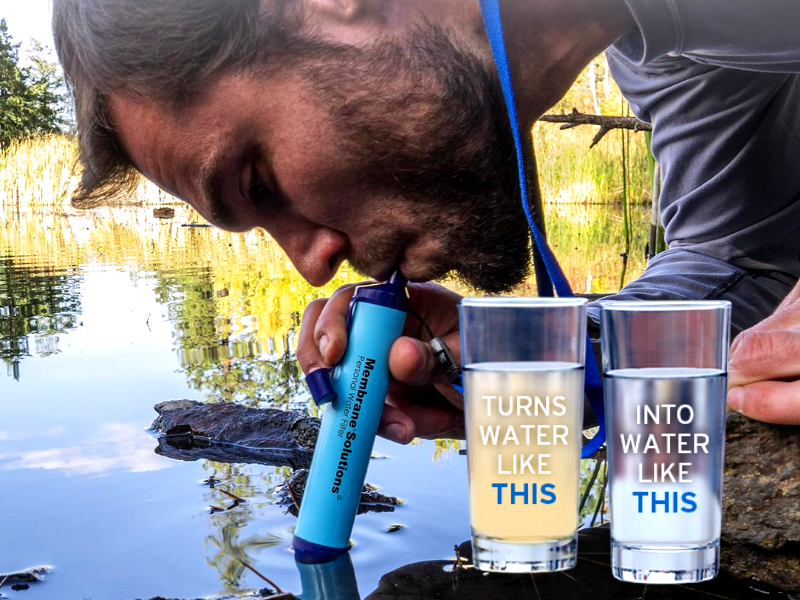
Filter straws are super versatile and can be used in many situations. For outdoor enthusiasts, they’re a lightweight and portable way to get clean water from lakes, rivers, and streams. Just fill a water bottle or cup with the source water, insert the straw, and drink. They’re a great addition to any hiking or camping gear.
In emergency preparedness kits, filter straws can be a lifesaver. During natural disasters or other emergencies, access to clean drinking water can be severely limited. However, it can be frustrating to only take a few sips before needing to unplug the sink and move on. Having a filter straw on hand means you can drink from almost any water source, whether it’s tap water, rainwater, or even muddy water. They’re a valuable tool for short-term and long-term use.
Case Study: LifeStraw in Third World Countries
The LifeStraw filter has been used in third-world countries to provide clean drinking water to communities without access to clean water. In many cases, these communities rely on contaminated water sources and develop waterborne diseases. The introduction of LifeStraw filters has reduced the incidence of diarrhea and beaver fever and overall public health.
One example is the use of LifeStraw filters in Kenya where they have been distributed to schools and households. The filters have given immediate access to clean water and also educated the communities about water filtration and hygiene. This has had a long-lasting impact and has contributed to better health outcomes and quality of life.
Comparing Filter Straws to Other Water Filtration Methods
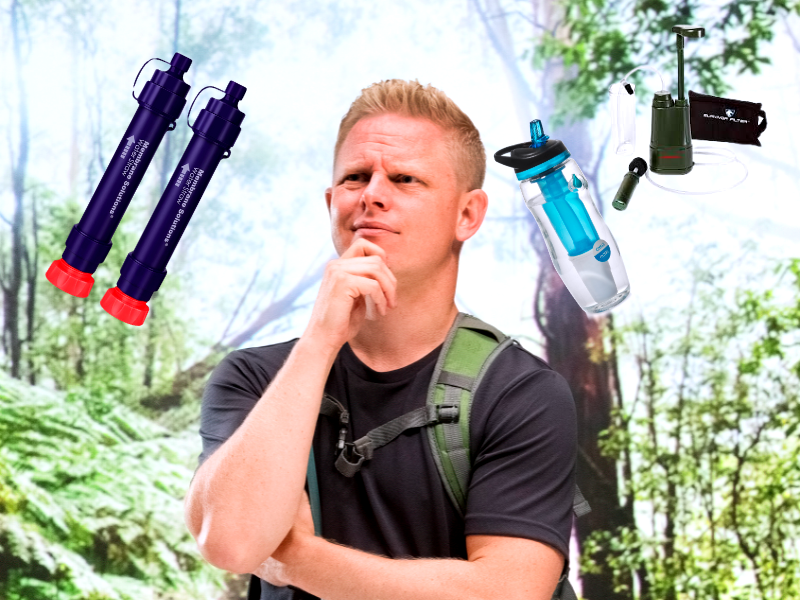
While filter straws are super convenient, they’re not the only option for water treatment and filtration. Pump filters, UV light purifiers, and bottle filters each have their advantages and disadvantages. Pump filters can filter more water and are effective against a wider range of contaminants, including viruses. But they’re bulkier and more work to use.
UV light purifiers are another option, using ultraviolet light to kill bacteria, viruses, and protozoa. They’re very effective but require batteries and don’t remove chemicals or sediment from the water. Bottle filters like MSR Guardian combine the convenience of a water bottle with built-in filtration, making them a popular choice for travelers and outdoor enthusiasts.
Limitations of Filter Straws
While they have many advantages, filter straws have some limitations. One of the main concerns is their lifespan. Most filter straws are designed to filter a certain volume of water, usually around 1,000 liters. After that, the filter becomes less effective and needs to be replaced. This can be a problem for long-term use or when replacement filters are not available.
Another limitation is they don’t remove all types of contaminants. While they’re very effective against bacteria and protozoa, they may not remove viruses, heavy metals, or certain chemicals. So it’s important to know what your filter straw can and can’t do and use other filtration methods if necessary.
User Experiences and Reviews

User reviews of filter straws are very positive, many love how easy to use and effective they are. Outdoor enthusiasts love being able to drink directly from natural water sources without having to boil or use chemical treatments. Many users have shared their experiences of using filter straws on hiking trips, camping adventures, and international travel, saying they’re reliable and practical.
However, some users have mentioned that the flow rate is slow, you need to put a bit of effort into drawing water through the straw. Others have said the taste of the filtered water varies depending on the source, some find it perfect and others notice a slight aftertaste. Overall users agree that filter straws are a valuable tool for anyone who needs clean water in tough conditions.
Maintenance and Care
Maintenance and care are key to extending the life and effectiveness of your filter straw. After use blow air through the straw to remove any remaining water and prevent clogging. Regularly cleaning the exterior and storing the straw in a dry cool place will also help extend its life.
If you’re using filter straws in muddy or heavily contaminated water, pre-filtering the water through a cloth or coffee filter will help reduce the load on the straw and extend its life. Also, periodically test the filter’s effectiveness with water testing kits to make sure it’s still providing safe drinking water.
Environmental Impact
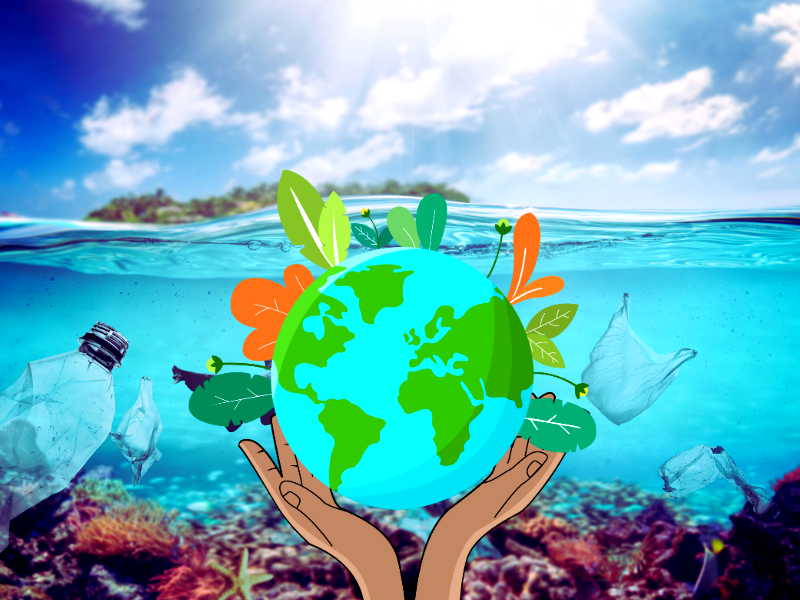
Filter straws are an environmentally friendly alternative to bottled water, reducing plastic waste and the carbon footprint of transporting bottled water. By providing a reusable solution for clean water, they contribute to sustainability and responsible water use.
Besides the environmental benefits, filter straws can also be used in disaster relief. By providing a simple and effective way to filter water, they can help communities recover from natural disasters and other emergencies and reduce reliance on bottled water and other temporary solutions.
Summary
Filter straws, such as the LifeStraw, provide a simple and effective means of accessing clean drinking water from various sources. They use a combination of hollow fiber membranes and activated carbon to remove bacteria, protozoa, heavy metals, and chemicals, making them a versatile tool for outdoor activities, emergency preparedness, and everyday use. While they have some limitations, including a finite lifespan and varying effectiveness against certain contaminants, their ease of use and portability make them a valuable addition to any water filtration strategy.
Keep up with the latest water filter tips and offers, and subscribe to our newsletter today!
FAQ
How long does a filter straw last?
Most filter straws are designed to filter around 1,000 liters of water. After this point, the filter becomes less effective and needs to be replaced. It's important to follow the manufacturer's guidelines for maintenance and care to ensure the longevity of your filter straw.
Can filter straws remove viruses?
While filter straws are highly effective against bacteria and protozoa, they may not remove viruses, which are smaller and can sometimes pass through the filter. For comprehensive protection, consider using additional filtration methods, such as UV light purifiers or pump filters.
Are filter straws suitable for everyday use?
Filter straws are a convenient option for outdoor activities and emergencies, but they may not be the most practical solution for everyday use. For regular water filtration, consider using a more permanent solution, such as a home water filter system or bottle filters with replaceable cartridges.
